Introduction
Have you ever felt like you’ve hit a wall in your strength training journey, despite your dedication and hard work? This common plateau is where progressive overload training steps in, a powerful approach that steadily pushes your body to new heights of muscle strength and endurance. Rather than jumping straight into heavier weights or longer workouts, progressive overload is all about making small, calculated adjustments that gradually build strength while minimizing the risk of injury.
Imagine being able to increase workout intensity without compromising form or facing setbacks. With the right techniques—like increasing weight incrementally, adjusting repetitions, or even changing your rest periods—you can make every workout a step closer to your goals. This method helps you not only avoid plateaus but also build a strong foundation for long-term fitness progression.
In this guide, you’ll learn how to apply progressive overload in a way that aligns with your personal fitness level, whether you’re a beginner or a seasoned athlete. By understanding the science and best practices, you can achieve safe strength progression and unlock steady gains in muscle growth. Ready to dive into the ultimate strategy for building strength effectively? Let’s get started!
What is Progressive Overload?
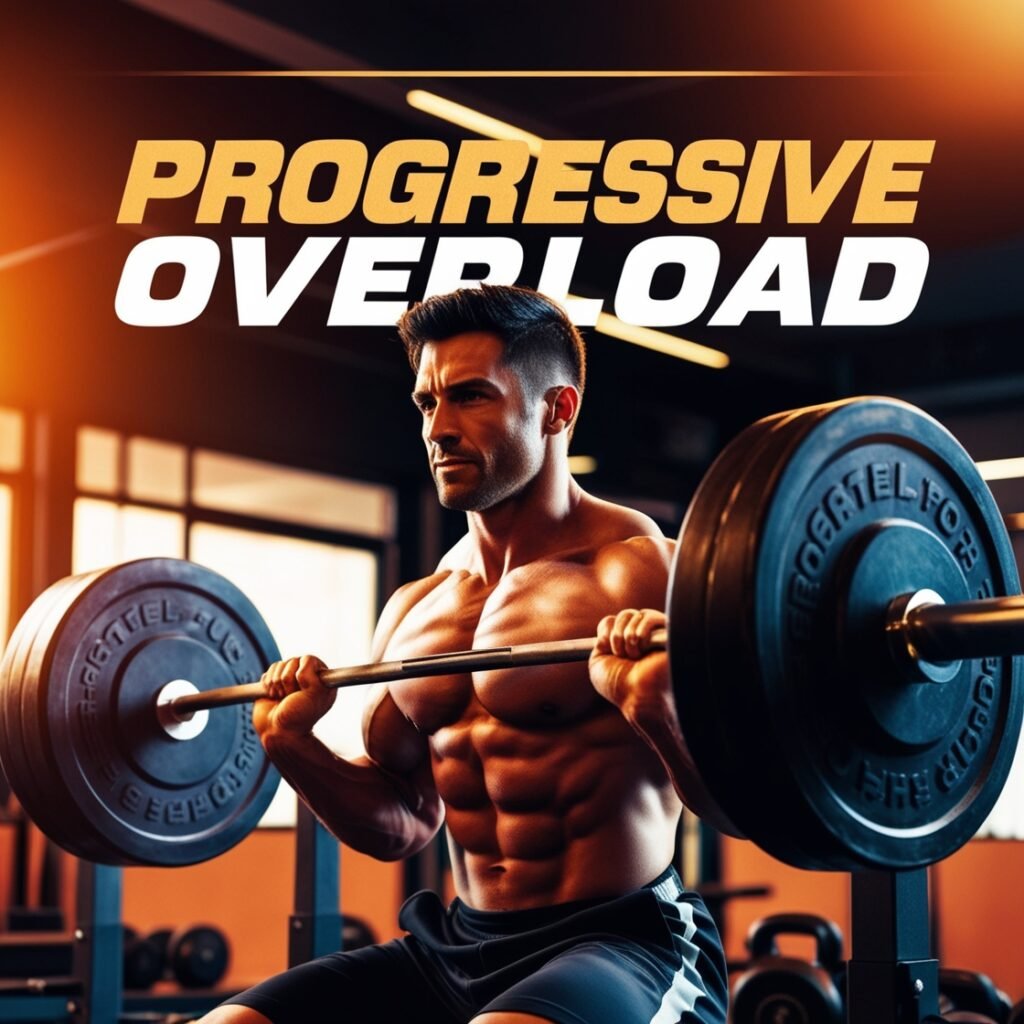
Have you ever wondered why your initial gains in the gym seem to level off after a few months? This is where progressive overload training becomes essential. At its core, progressive overload is the process of gradually increasing the demands on your muscles to spark growth and improved strength. Rather than pushing too hard too fast, it’s about making small, smart adjustments that your body can safely adapt to over time.
Here’s how progressive overload works:
- Increase Resistance: By adding weight to your workouts, you challenge your muscles to work harder, leading to muscle growth.
- Add Repetitions or Sets: Small boosts in reps or sets can prevent your body from getting too comfortable, keeping fitness progress steady.
- Adjust Rest Periods: Reducing rest time between sets forces your muscles to recover faster, increasing endurance and stamina.
Why does progressive overload matter? Without it, your workouts may plateau, leaving you frustrated with a lack of results. This technique allows for safe strength progression and builds a foundation for long-term gains. Plus, with methods that range from increasing reps to tweaking tempo and intensity, you can customize each session to match your current fitness level and goals.
Whether you’re new to strength training or a seasoned athlete, progressive overload helps you break through limits without risking injury. Ready to make each workout count?
The Science Behind Progressive Overload
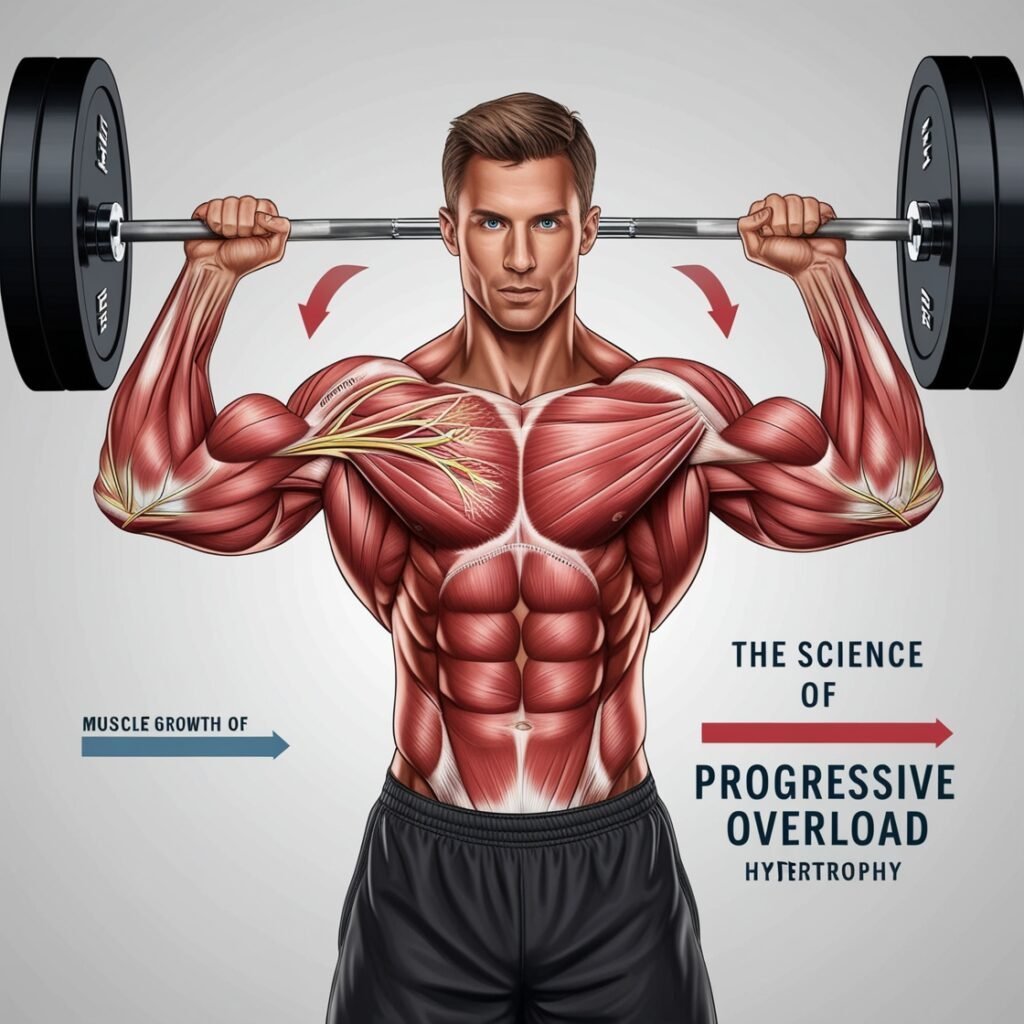
Ever wondered how muscles grow and adapt over time? The science behind progressive overload reveals that muscles respond to gradual stress by becoming stronger, thicker, and more resilient. Each time you challenge your body with an increased load, your muscles adapt to meet that new demand—a process known as hypertrophy. By consistently applying gradual progression, you can achieve significant gains in muscle strength and endurance.
Here’s how progressive overload transforms your body:
- Muscle Fibers Break Down and Rebuild: When you lift heavier or add repetitions, you create tiny tears in muscle fibers. During rest, these fibers repair and grow stronger.
- Enhanced Nervous System Efficiency: As you train, your nervous system adapts to recruit muscle fibers more effectively, allowing you to handle heavier weights with greater control.
- Improved Endurance: Progressive overload doesn’t just increase strength; it also boosts cardio endurance. Gradual increases in workout intensity can improve your stamina for activities like running, cycling, or any cardio endurance exercise.
By understanding this process, you can better plan your workouts to maximize results. It’s also key to preventing injury—progressing gradually lets your body adapt safely without sudden stress.
Progressive overload isn’t just a buzzword; it’s a proven path to steady, sustainable fitness progression. With the science on your side, you’re set for stronger, healthier gains!
Key Methods to Apply Progressive Overload
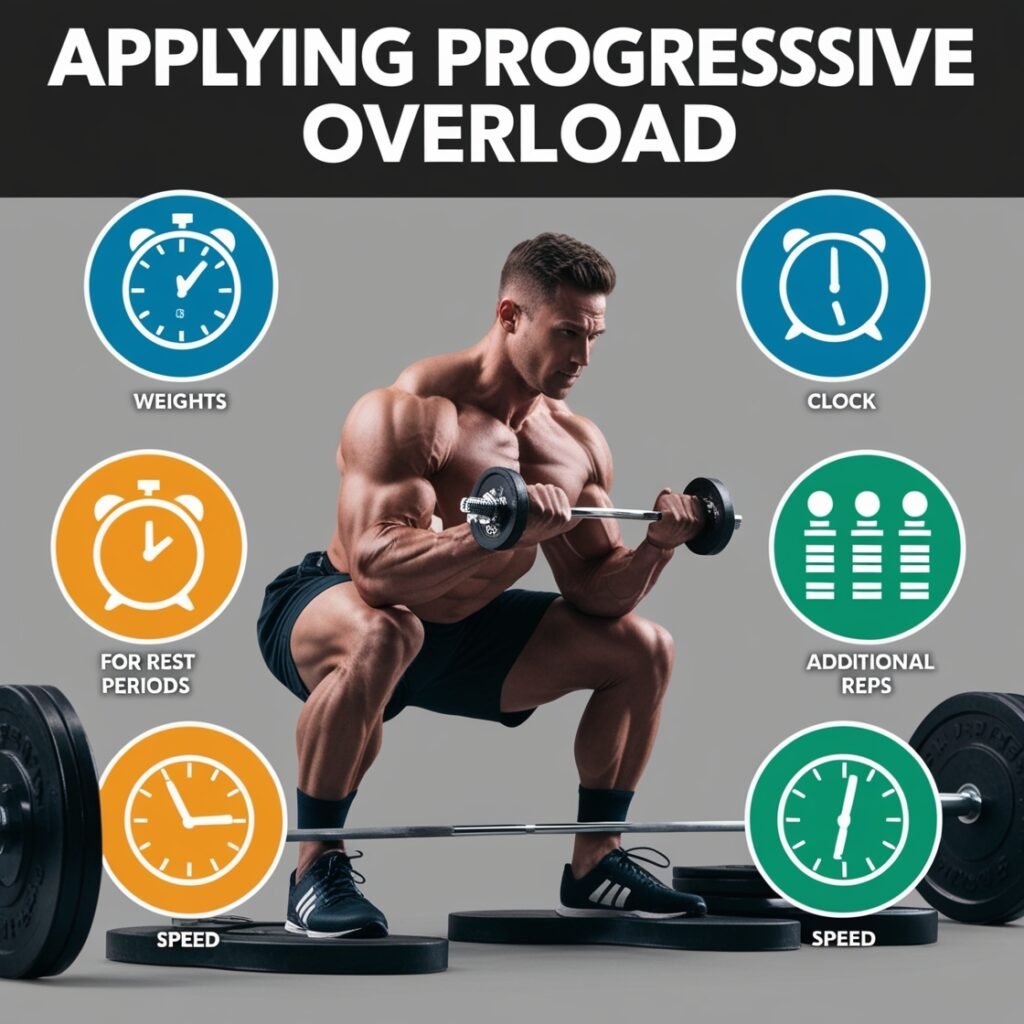
Ready to start making gains? Progressive overload offers several ways to keep challenging your body and avoid hitting that dreaded workout plateau. You don’t need to overhaul your entire routine; instead, small, consistent changes can have a big impact. Let’s dive into the most effective methods to apply progressive overload training to your workouts.
- Increase Resistance Gradually
Adding more weight—whether it’s an extra five pounds on your dumbbell curls or a slight increase on the squat rack—is a straightforward way to push your muscles. This gradual increase helps stimulate muscle growth without overloading your body too quickly. - Add Reps or Sets
Not ready to increase weight yet? Try adding a few extra repetitions or another set. This keeps your muscles working harder without changing the exercise itself, making it ideal for steady fitness progression. - Reduce Rest Time Between Sets
Shortening your rest period is an easy way to increase workout intensity. By limiting rest, you’ll challenge your muscles to recover faster, which can improve both strength and endurance over time. - Increase Workout Tempo
Slightly speeding up your movements or focusing on controlled, slow reps can shift how your muscles work. A faster tempo can increase the intensity of your workout, while slower reps can build muscle strength through greater control. - Extend Workout Length or Frequency
If you have time, extending your session by a few minutes or adding an extra workout day can boost your cardio endurance and keep your routine fresh. Just remember: allow enough rest days to avoid overtraining!
Each of these methods provides a unique way to achieve safe strength progression without risking injury. Choose the techniques that best match your fitness goals and current abilities. With consistency and careful adjustments, progressive overload can help you achieve noticeable, lasting results.
Benefits of Progressive Overload Training

Why choose progressive overload training over other methods? The answer lies in its unique ability to deliver consistent gains while keeping your body safe and balanced. With progressive overload, you’re not only working towards muscle growth but also ensuring long-term fitness progression that sticks. Here are some key benefits you can expect:
- Sustainable Muscle and Strength Gains
By gradually increasing resistance or adding reps, you’re setting the stage for safe strength progression. This measured approach helps build muscle strength and mass without overburdening your body, making it easier to sustain over time. - Reduced Risk of Injury
Rushing into heavier weights or faster tempos can lead to injury. Progressive overload promotes gradual progression, allowing your muscles, joints, and connective tissues to adapt. This method encourages proper form, which is essential for injury-free workouts. - Enhanced Endurance and Cardio Benefits
Beyond muscle gains, progressive overload can improve your cardio endurance. Techniques like reducing rest time or increasing workout tempo help boost stamina and cardiovascular health, making this approach versatile for all-around fitness progress. - Avoiding Plateaus
Sticking to the same workout routine can leave you feeling stuck. By regularly challenging your body with small adjustments, you can avoid workout plateaus and keep the results coming, keeping you motivated and focused on your goals. - Tailored to Your Fitness Level
Whether you’re a beginner or advanced, progressive overload can be customized. Start small with light weights or low reps and build up gradually, making each workout a step closer to your ultimate goals.
Each of these benefits adds up to a training approach that’s both challenging and rewarding. With progressive overload, you’re in control of your fitness progression—no shortcuts, just steady, safe results.
Common Mistakes to Avoid with Progressive Overload

Are you making the most out of your progressive overload training? While it’s an effective way to build strength and improve fitness progress, some common missteps can slow down results—or worse, lead to injuries. Here’s what to watch out for so you can get the best results safely.
- Increasing Weight Too Quickly
It’s tempting to add more weight right away, but safe strength progression relies on gradual increases. Pushing too hard can compromise proper form and increase your injury risk. Stick to small increments and give your body time to adapt. - Ignoring Recovery and Rest Days
Progress doesn’t happen overnight, and rest is a crucial part of growth. Without adequate recovery, you risk overloading your muscles without time for them to rebuild. Aim for rest between workouts to support both muscle growth and endurance. - Not Tracking Your Progress
To maximize results, you need to track every increase in reps, weight, or tempo. Without tracking, it’s easy to fall into a routine without challenging yourself. Use a workout journal or app to stay on top of each milestone. - Skipping Warm-Ups
Jumping into heavy lifts without warming up can lead to stiffness, or worse, injury. Warming up with light cardio or mobility exercises gets your muscles ready for the intensity of a progressive overload session. - Neglecting Certified Trainer Advice
If you’re new to strength training or feel uncertain, a certified personal trainer can be invaluable. They can help you customize your routine, teach correct form, and set realistic goals for safe and effective fitness progression.
By avoiding these common mistakes, you’ll set yourself up for a more effective and enjoyable progressive overload experience. Remember, each session builds on the last—small, consistent adjustments are key to reaching your strength goals safely and sustainably.
How to Start a Progressive Overload Routine
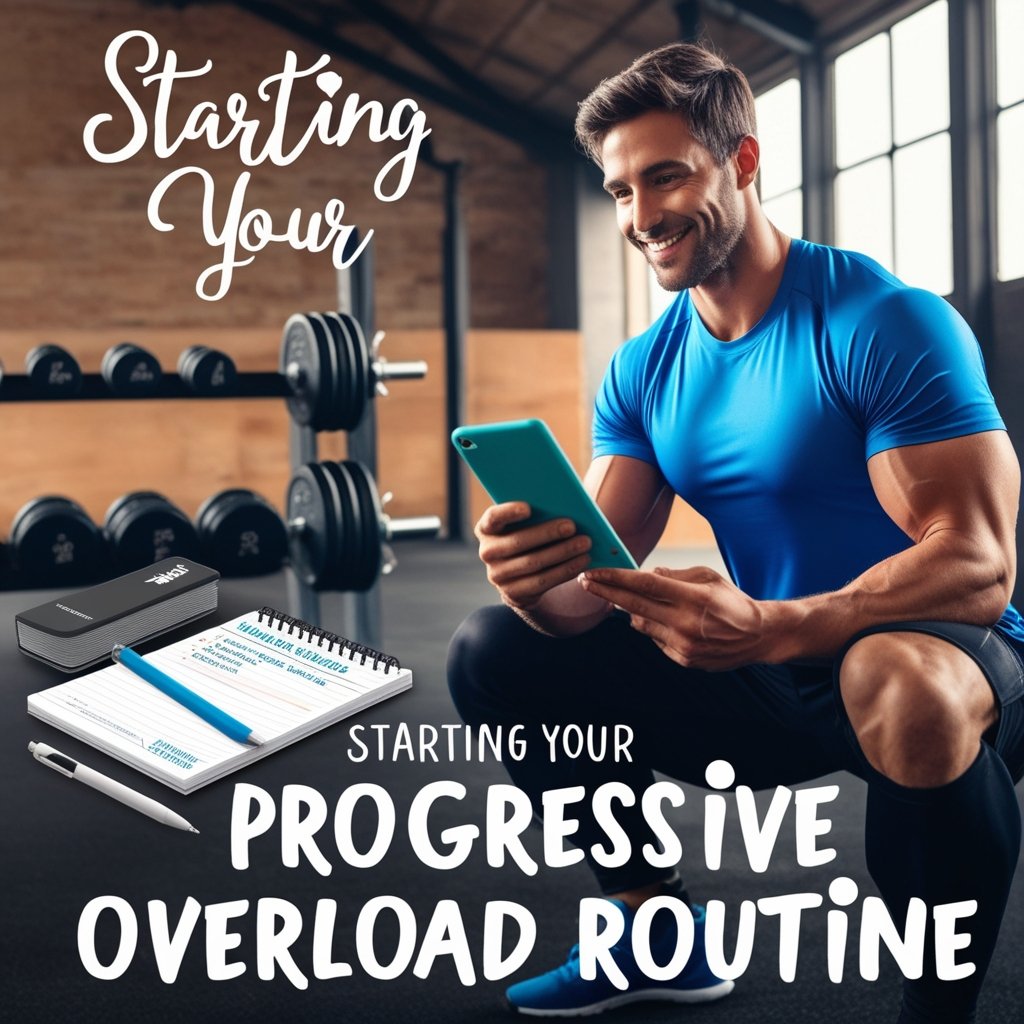
Are you ready to embrace the power of progressive overload training? Starting this approach can feel daunting, but with the right steps, you can effectively incorporate it into your routine and watch your strength soar. Here’s how to kick off your journey toward safer and more effective muscle growth.
- Assess Your Current Strength Level
Before you begin, take the time to evaluate where you stand. This means testing your maximum lifts for key exercises like squats and bicep curls. Understanding your baseline allows you to set realistic and achievable goals for your fitness progression. - Set SMART Goals
Create Specific, Measurable, Achievable, Relevant, and Time-bound goals. For example:- Increase your squat weight by 10% over the next month.
- Add two reps to your bench press each week. These goals will keep you motivated and focused on steady improvement.
- Choose the Right Exercises
Start with compound movements that engage multiple muscle groups, such as:- Squats
- Deadlifts
- Bench Press These exercises provide a strong foundation for building muscle strength and are perfect for applying progressive overload.
- Implement Incremental Changes
As you progress, make small adjustments. This could mean:- Increasing weight by 5% each week.
- Adding one additional set or repetition.
- Reducing rest time between sets. Remember, gradual changes lead to long-lasting results while minimizing the risk of injury.
- Track Your Progress
Keep a workout journal or use fitness apps to log your lifts, sets, and reps. Documenting your journey helps you stay accountable and recognize patterns in your fitness progress. Plus, it’s motivating to look back and see how far you’ve come! - Prioritize Recovery
Don’t overlook the importance of rest days. Allowing your body to recover is essential for muscle repair and growth. Plan your routine to include at least one or two rest days each week to support endurance building and prevent burnout.
Starting a progressive overload routine doesn’t have to be complicated. By following these steps, you’ll create a solid framework for growth that aligns with your goals. Remember, consistency is key—each workout is an opportunity to challenge yourself and unlock your potential!
Sample Progressive Overload Workout Plan
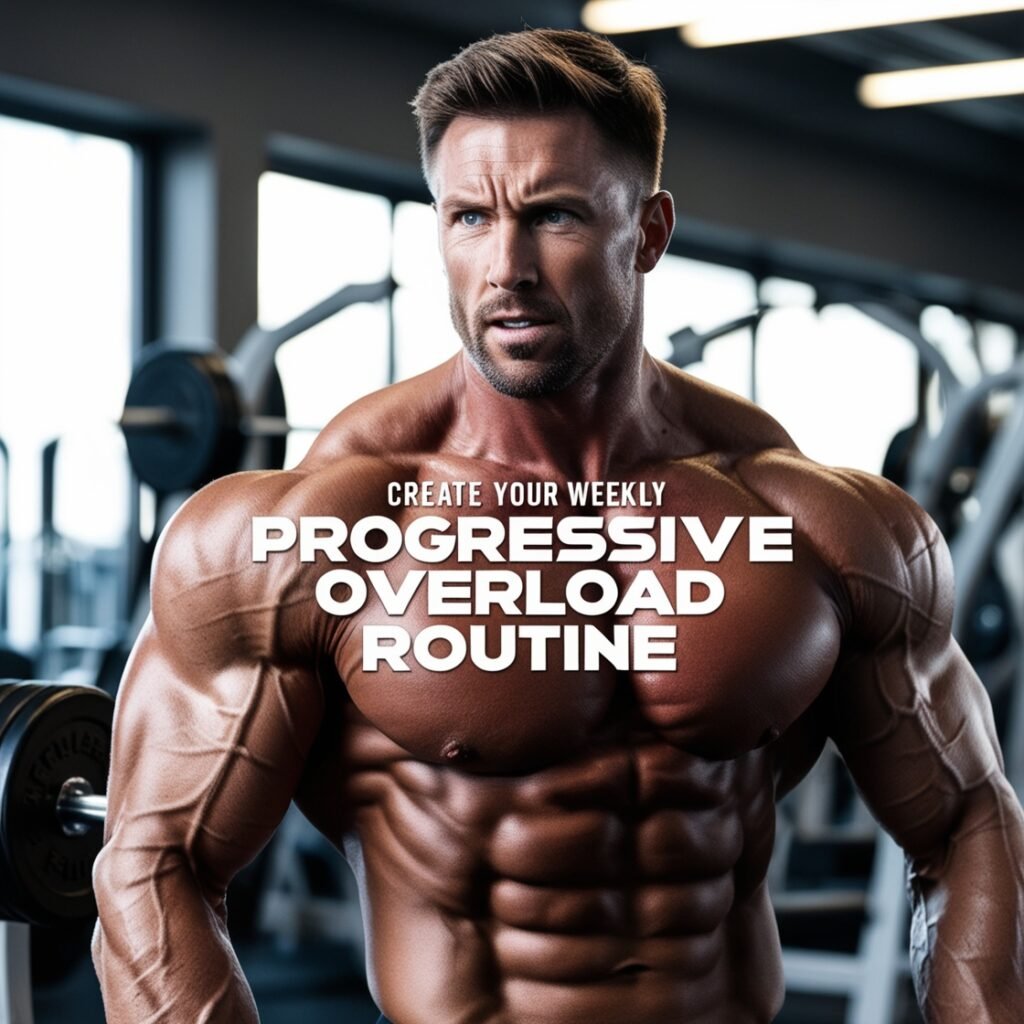
Are you looking to put progressive overload into action? Here’s a sample workout plan that incorporates this effective training method to help you build strength and achieve your fitness goals. Feel free to customize it based on your fitness level and preferences!
Weekly Overview:
- Monday: Upper Body Strength
- Wednesday: Lower Body Strength
- Friday: Full Body Workout
- Saturday or Sunday: Optional Cardio or Active Recovery
Monday: Upper Body Strength
- Bench Press
- Week 1: 3 sets of 8 reps at 70% of max
- Week 2: 3 sets of 9 reps
- Week 3: 4 sets of 8 reps
- Bent-Over Rows
- Week 1: 3 sets of 10 reps
- Week 2: Increase weight by 5%
- Week 3: 4 sets of 8 reps
- Shoulder Press
- Week 1: 3 sets of 10 reps
- Week 2: 3 sets of 11 reps
- Week 3: 4 sets of 8 reps
Wednesday: Lower Body Strength
- Squats
- Week 1: 3 sets of 8 reps
- Week 2: Increase weight by 5%
- Week 3: 4 sets of 6 reps
- Deadlifts
- Week 1: 3 sets of 8 reps
- Week 2: 3 sets of 9 reps
- Week 3: 4 sets of 6 reps
- Leg Curls
- Week 1: 3 sets of 10 reps
- Week 2: Increase weight by 5%
- Week 3: 4 sets of 8 reps
Friday: Full Body Workout
- Deadlifts
- Week 1: 3 sets of 6 reps
- Week 2: Increase weight by 5%
- Week 3: 4 sets of 5 reps
- Push-Ups
- Week 1: 3 sets of 10 reps
- Week 2: 3 sets of 12 reps
- Week 3: 4 sets of 10 reps
- Plank
- Week 1: Hold for 30 seconds
- Week 2: 40 seconds
- Week 3: 50 seconds
Frequently Asked Questions (FAQs)
1. What is progressive overload?
Progressive overload is a training principle that involves gradually increasing the stress placed on your body during exercise to stimulate muscle growth and strength gains. This can be achieved through increasing weight, repetitions, or workout intensity.
2. How often should I increase my weights?
The frequency of weight increases depends on your current fitness level and experience. Generally, aim to increase weights every 1-2 weeks, or whenever you can comfortably complete all sets and reps with proper form.
3. Can I apply progressive overload to cardio workouts?
Absolutely! For cardio, you can progressively overload by increasing the duration of your workouts, the intensity (speed), or the distance covered. For example, you might aim to run a longer distance each week or increase your pace.
4. What if I hit a plateau?
Plateaus are common in strength training. To overcome them, consider changing your routine, incorporating different exercises, adjusting your rep ranges, or increasing your training frequency. Remember, listen to your body and ensure adequate recovery as well.
5. Is progressive overload safe for beginners?
Yes, but it’s essential for beginners to focus on mastering proper form before increasing weight or intensity. Starting with lighter weights and gradually increasing them helps to minimize the risk of injury while still promoting progress.
Conclusion
Incorporating progressive overload into your workout routine is a smart, effective way to achieve lasting gains in strength and endurance. By making gradual changes in weight, reps, or intensity, you can break through plateaus, reduce your risk of injury, and stay motivated on your fitness journey. Whether you’re adding a few extra reps, increasing the weight by a small amount, or shortening your rest periods, each adjustment brings you closer to your goals.
Remember, fitness progress isn’t about giant leaps but steady, consistent steps. Are you ready to take the next one? Start small, track your improvements, and enjoy the rewarding journey of safe strength progression. With progressive overload, each workout is a building block towards a stronger, healthier you.

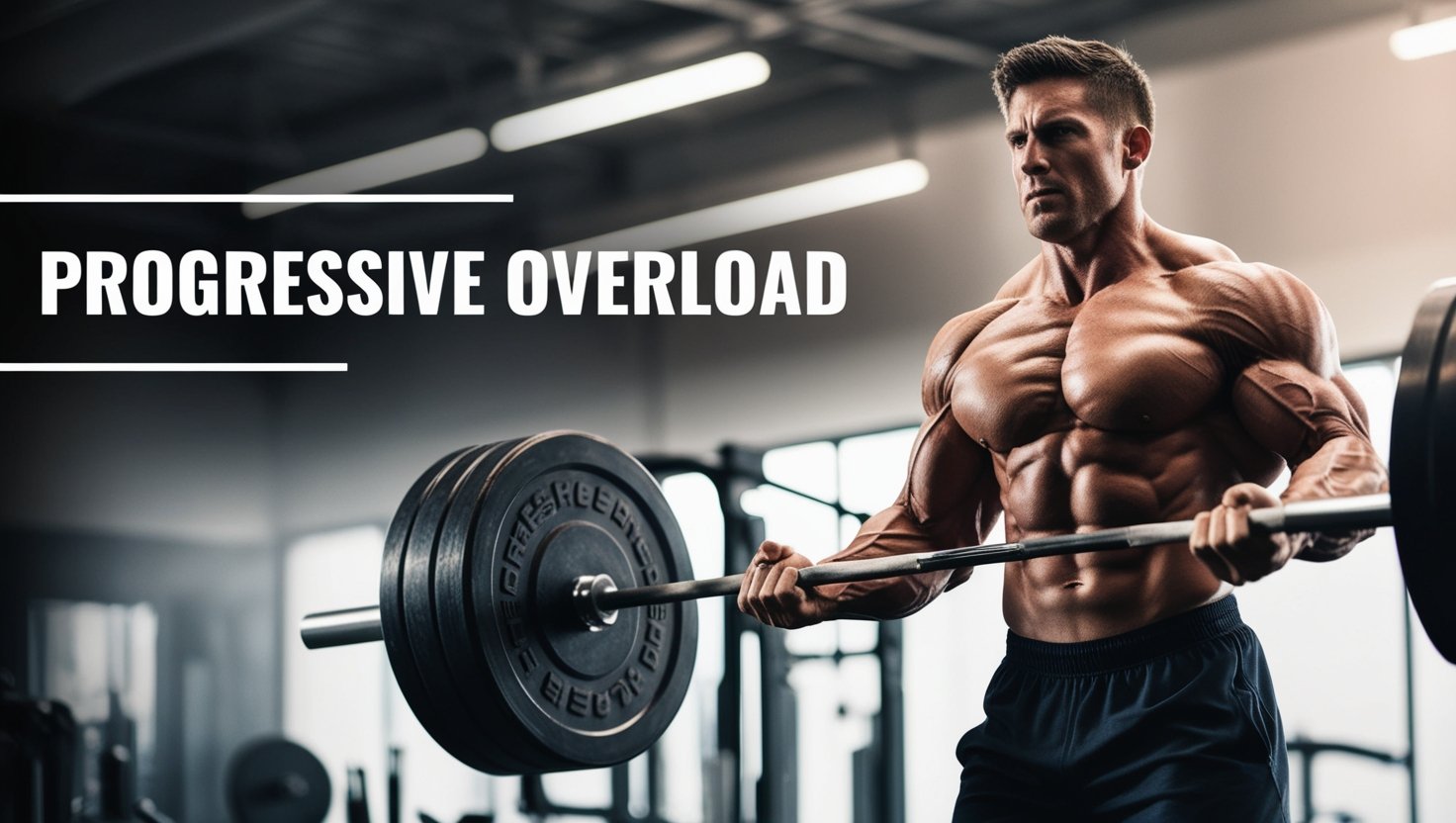
2 Responses
The content in this blog is truly eye-opening. Your perspective on this topic is refreshing! I appreciate the detailed information shared here. I’ve been searching for information like this for a while. This article is a treasure trove of information! Such a helpful article, thanks for posting! I’ve been searching for information like this for a while.
Thank you so much for the kind words! I’m really glad the article was helpful and that it gave you the information you were looking for. Your support means a lot — comments like yours truly motivate me to keep creating and sharing!